How wearable heart-rate monitors work?
If you want to get a fitness tracker, you have to decide is if you want one that's compatible with a heart-rate monitor. Learning your heart-rate patterns, both during a workout and during daily activity, can show you a lot about your health. According to Harvard's Health blog, your resting heart rate is a key factor to determining your overall current and future health, and monitoring heart-rate changes over time can give you more of the information you need to lead a healthy life.
Chest straps and optical heart-rate monitors are the two most common types of pulse trackers available for modern wearables, and they both use similar methods to measure your pulse. However, their key differences in methodology and design will dictate which device you choose when picking a workout companion.
Chest straps
Heart-rate monitoring chest straps are both loved and hated. Most of them are made of a long, belt-like elastic band that wraps snugly around your chest, a small electrode pad that sits against your skin, and a snap-on transmitter. These heart-rate monitors work differently than the ubiquitous wrist-bound monitors on new wearables because they use electrocardiography to record the electrical activity of your heart. This process requires electrodes, which live in the shiny, flat pad against the skin. That pad needs moisture water or sweat to pick up any electrical signal. When you're working out and sweating, the electrodes pick up the electrical signals given off by your heartbeat, and they send that information to the transmitter.
The transmitter is typically the only part of the chest strap that is detachable. Inside is a microprocessor that records and analyzes heart rate from those electrical signals, as well as a battery and the chips needed for Bluetooth connectivity. Using Bluetooth and a connected smartphone, the transmitter can consistently send heart-rate data to your mobile device, which acts as the receiver. Before people started using mobile apps as their sole receivers, heart-rate chest straps sent their information to old-school fitness watches that showed the data on their displays. With many chest straps, you now have the option to connect them to another wearable or simply use a compatible mobile app to record and save pulse data.
Optical monitors
Optical heart-rate monitors are the most common pulse sensors in wearables. Most of them glean heart-rate data through "photoplethysmography" (PPG), or the process of using light to measure blood flow. Wearables with optical heart-rate monitors have small LEDs on their undersides that shine green light onto the skin on your wrist. The different wavelengths of light from these optical emitters interact differently with the blood flowing through your wrist. When that light refracts (or reflects) off your flowing blood, another sensor in the wearable captures that information. That data can then be processed, along with motion information detected by the device's accelerometer, with algorithms to produce understandable pulse readings.
Since most modern fitness trackers are wristbands, optical heart-rate monitors typically sit on your wrist. But we have seen some variation recently, like with Moov's latest fitness tracker that puts an optical heart-rate monitor on your temple. Earbud heart-rate monitors that also use photoplethysmography have started to become more common as well. No matter where the device sits, the PPG process is the same: measuring heart rate through analyzing light refracted off flowing blood.
The accuracy question
The biggest reason many athletes prefer chest straps to wrist-mounted monitors is accuracy. People like to criticize wristbands for being grossly inaccurate, and, in their infancy, this reputation was earned. There are specific reasons why chest straps are more accurate in general: most importantly, the sensor is placed closer to the heart than a wristband is, allowing it to capture a stronger heart-beat signal. When doctors and nurses use ECG machines to assess patients, they place up to 12 leads on various parts of the patient's body, most of them going on the chest around the heart. This lets medical professionals more comprehensively assess the electrical activity of the heart, and chest straps simplify this method because no one wants to attach multiple sensors to their body when they go for a run.
Another reason why chest straps tend to be more accurate than wristbands is that there's less room for user error. As long as you purchase the right sized strap, it's very difficult to wear a chest strap too loosely—the strap would just fall down to your waist. Also, the electrodes are typically fixed on the strap, so you can only fiddle with the placement so much. Some chest straps just have one central electrode that sits in the middle of your chest, just underneath the breast bone, while others can have two electrode pads that hug the inner portion of your rib cage.
No matter which style you have, you can't adjust the placement of the electrodes unless you twist the entire strap around your body. In that case, the pads would be off-center or even positioned against your back rather than your chest. There's little flexibility when using a chest strap, and while that can make them uncomfortable for some users, it's also a big reason why they're consistently accurate.
But optical heart-rate monitors in more convenient or comfortable devices aren't totally unreliable. They've gotten better over the years, and considering PPG isn't a new, it's not an inherently flawed way of capturing heart-rate data. In comparison to electrocardiography and chest straps, PPG and modern wearables offer more ways for users to mess with the system's accuracy. Movement can disrupt the accuracy on an optical heart-rate monitor, mostly because the fast-paced movements you do when you're working out can push the monitor around on your wrist. Unlike a chest strap, wristbands are much easier to adjust for comfort and fit. While that makes wristbands easier to wear, they can also be moved out of place more easily. Wristbands with optical monitors should be worn just above the wrist bone, or about two-fingers width from where your hand meets your wrist. If the monitor moves too low or too high on your arm, you can easily get an inaccurate reading.
If you wear the device tightly enough on your wrist, movement shouldn't be much of an issue. Fit is incredibly important, but you also need to look out for how tightly you wear a fitness-tracking wristband. If worn too tightly, the band can interfere with blood flow—even if the optical monitor can pick up a signal, it won't be accurate because blood cannot flow through your wrist naturally. But if worn too loosely, space and air can prevent the optical heart-rate monitor from capturing your heart rate at all. It's a tricky balance to achieve, but ideally your heart-rate tracking wristband should fit snugly enough so that it cannot move on your wrist without you moving it yourself, but loosely enough so you don't feel constricted or irritated by its presence.
Which should you use?
I recommend a chest strap for anyone considering heart-rate zone training. These devices are more reliable and consistent in reading your heart rate accurately, no matter if you're lounging around your home or in the middle of a HIIT session. But the fact is that some people won't find chest straps comfortable to wear, or they would rather have a modern fitness tracker that conveniently includes a heart-rate monitor.
Those who should forgo wristband-based heart-rate monitors are those who are very active and have specific goals to meet with their fitness training. People like triathletes, marathon runners, athletes training to compete in a specific sport, and the like should invest in a chest strap because most of them offer flexibility on top of consistent accuracy. Devices like Polar's H7 and Garmin's HRM3 work with third-party apps that can connect to Bluetooth or ANT+ devices, so you can train with the program you like without worrying if the heart-rate monitor will be compatible. Depending on your goals, you may use multiple apps and programs to train each day, and most wristband-based heart-rate monitors are tied to the tracker's app and (if you're lucky) a shorter list of compatible third-party apps that play nice with the main companion app.
Maybe you're not at marathon-runner level yet, and maybe you're not sure if you ever want to get there. But you care about your health and you're fairly active, and you'd like to know heart-rate information when you're working out and throughout the day. You'll get more use out of a fitness tracker with a heart-rate monitor, like the Fitbit Alta HR or the Garmin Vivosmart HR, since those devices are meant to be worn all day (and sometimes all night, too). The all-day aspect of modern fitness trackers is to their advantage because heart-rate chest straps typically come off as soon as you're done training. You could wear a chest strap all day long, but that would likely get uncomfortable a few hours after you finished working out. At their core, fitness wristbands are accessories, making them easy to wear in nearly any kind of social or professional situation while still gathering your health data
Link of MI band 3 - click here
ALSO CHECK OUT MY YOUTUBE CHANNEL> https://www.youtube.com/channel/UCw7uK6BHzkj0eoeRXvPNKyA?view_as=subscriber
FOLLOW ME ON INSTAGRAM> https://www.instagram.com/_rinkiyakepapa_official/
ASK QUESTIONS IN COMMENTS :)
ASK QUESTIONS IN COMMENTS :)




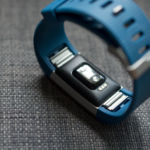
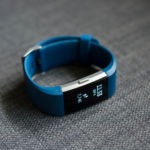
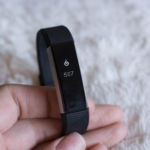
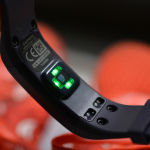
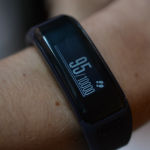
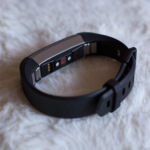
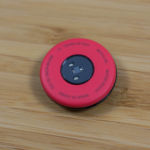
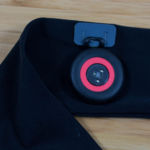



Comments